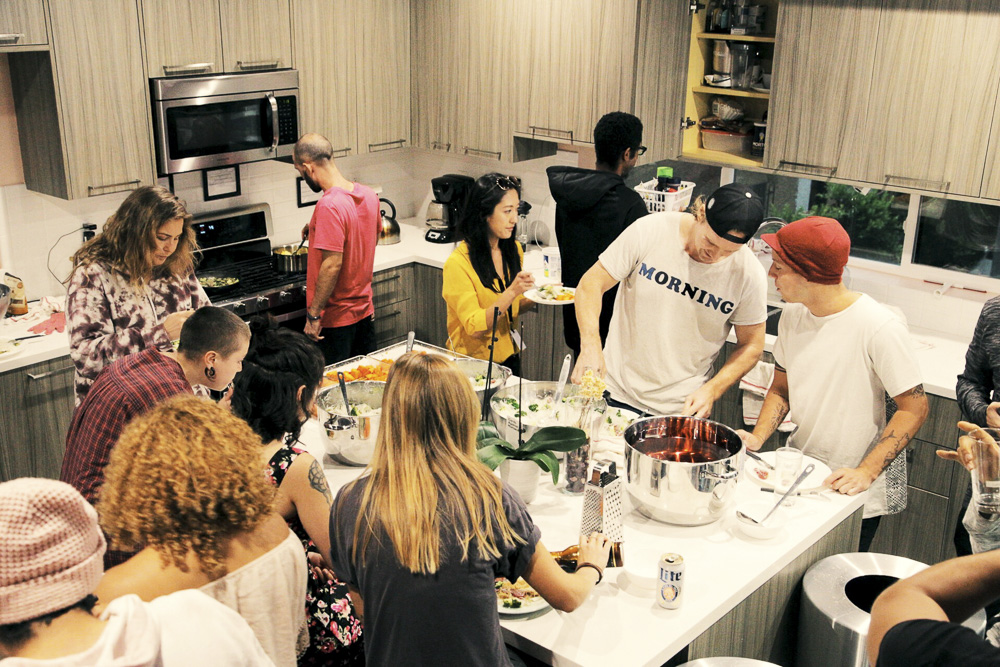The co-living market is luring Millennials and Gen Zers into housing with five-star amenities at half the cost of a studio apartment — if they trade their California King for a 30-square foot sleeping pod.
Kay Wilson has 23 roommates. They all share a roof, five bathrooms, a fully-stocked kitchen, two commercial refrigerators, a common area, a movie theater and an art studio. They keep track of kitchenware and food through a labeling system, and the house rules more or less boil down to this — clean up after yourself right away, and no sex. Fair enough, since they sleep six to a room in Japanese-style bed pods, stacked up against one another.
For $795 a month, Wilson pays for a life built into her housing. Her co-living membership provides a laundry list of all-inclusive perks: fitness centers, recording studios, yoga and dance classes, guest speakers, house concerts, field trips and career-building workshops.
“You get what you put into it,” Wilson says, standing in the courtyard of her East Hollywood house off Melrose Avenue. “And my sleep in that pod is good.” After all, she says she could be homeless, and “there are plenty of people on the street right out front.”
Pod complexes signal a new wave of co-living companies cropping up across the city. They favor creative and entrepreneurial spirits who are willing to sacrifice privacy and space in exchange for a readymade community and curated events. And sleeping pods — bed (or coffin) sized hotel rooms originally designed for tipsy Japanese salarymen who missed the last train home — represent a short-term palliative as California’s shortage of affordable housing deepens and L.A.’s homeless population soars.
Catering to a growing population that prioritizes experiences over things and flexibility over ownership, co-living 2.0 sells housing as a service rising from the bottom of Maslow’s Hierarchy of Needs: warmth, rest, safety, security, belonging, feelings of accomplishment and self-actualization.
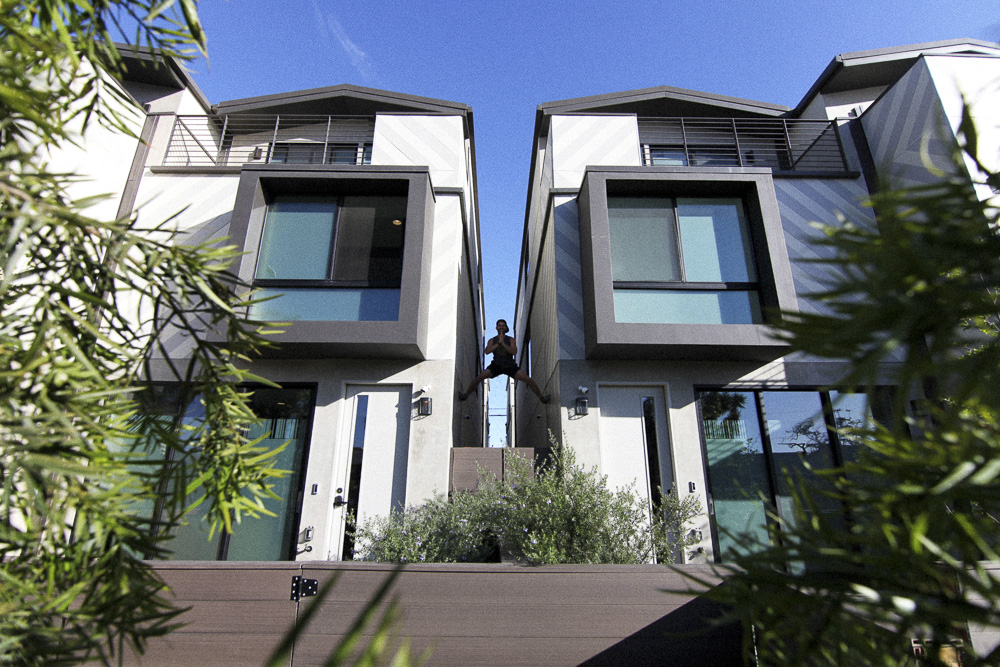
‘Co-living At Its Finest’
Wilson and her 23 roommates live in one of four houses on a 12,000-square-foot lot managed by Upstart Creative Living, a co-living community for residents with creative ambitions. Aside from the nine overflowing trash cans outside the charcoal-hued McModern in East Hollywood, one would never suspect there were 96 people living inside. Unless one ignored the steady stream of young people walking in and out of the buildings every 10 minutes. Some neighbors might imagine it another kind of house (see: trap), but Upstart bills itself as a members-only private club (because L.A. needs more of those), and instead of looking at income, credit scores, or recommendations during the application process, they evaluate candidates based off creative career goals and work samples.
“I like to call it a cross between summer camp and a college dorm,” says Upstart founder and CEO Jeremiah Adler. In three years, Upstart has grown to eight locations across the city with 400 members, all of whom he says are artists, actors, musicians, DJs, models, comedians, writers, directors, dancers or entrepreneurs. Move-in is virtually hassle-free as furnishings are provided, leases are month-to-month and utilities and Wi-Fi are included, as are bed linens, towels and toiletries and daily housekeeping.
A decade ago, Adler came to town with dreams of embodying the Holy Trinity — writer, director, actor — and, like every great L.A. story, became disillusioned with the rat race.
“I found the city to be super disconnected, lonely and superficial,” he says. After he quit acting for a job in property management, he had the idea to combat the starving artist trope and make L.A. more accessible to the young and struggling. Just don’t call it a permanent housing solution, Adler says.
“Everyone here has a dream,” says Daniel Sky, a gregarious 27-year-old singer-songwriter who moved into Upstart two weeks ago from New York. “Like Jake, who’s going to be on the big screen one day. Doesn’t he look like an actor?” He points out various housemates as they walk by and celebrates their auditions and callbacks. “You’re never alone. There’s always someone to talk to, who understands you. Who’s in it with you. Because when you’re a dreamer, you’re a loner.”
Sky found Upstart on Craigslist. He felt he needed to be in L.A. for his music career and step out of his comfort zone. He and his roommates party together, go to networking events, make music. And it’s fine that pod-living doesn’t allow for romantic relationships — he doesn’t want some couple fighting in the kitchen while he’s trying to work.
“People do get close, though,” he says. At a co-living house, alliances are formed with sleepaway camp-like intensity. “It’s not just a place to crash, it’s a place to come and achieve,” he says. “If meeting new people helps you in your art, then this is co-living at it’s finest.”
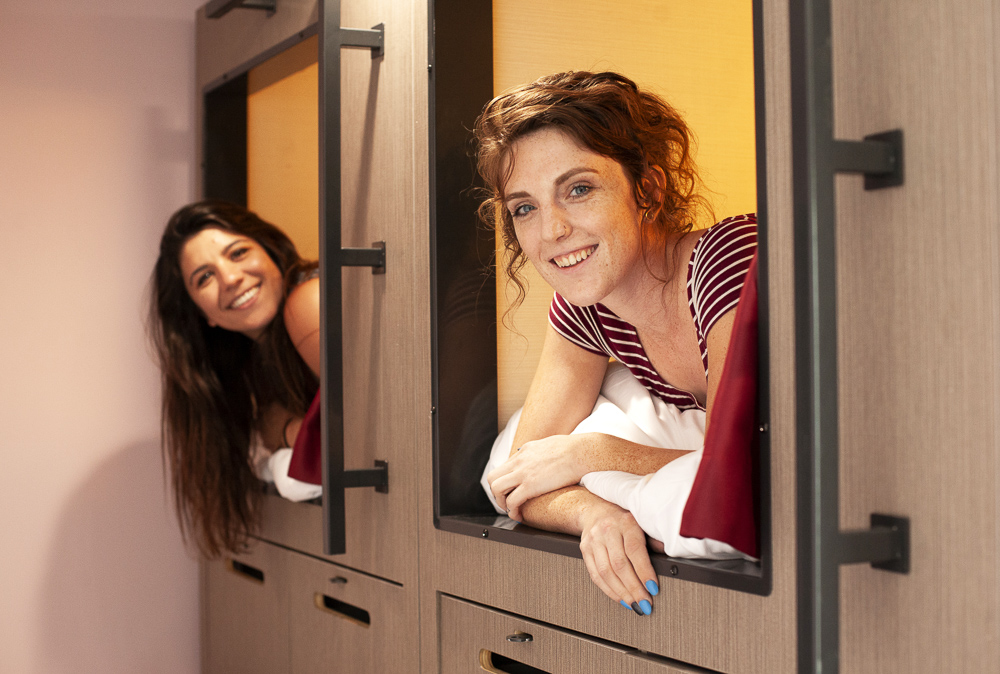
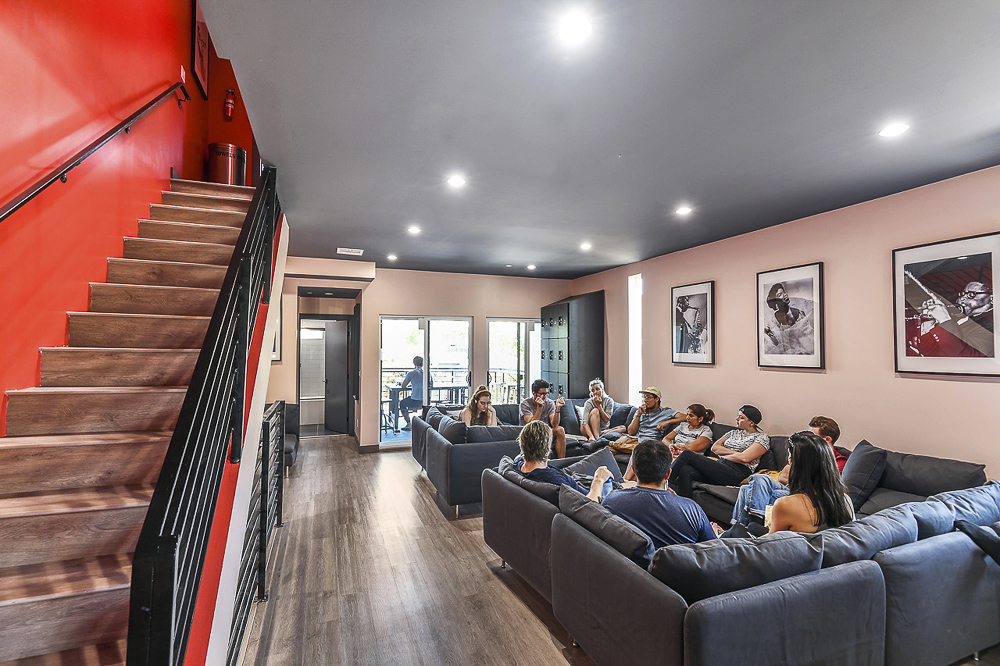
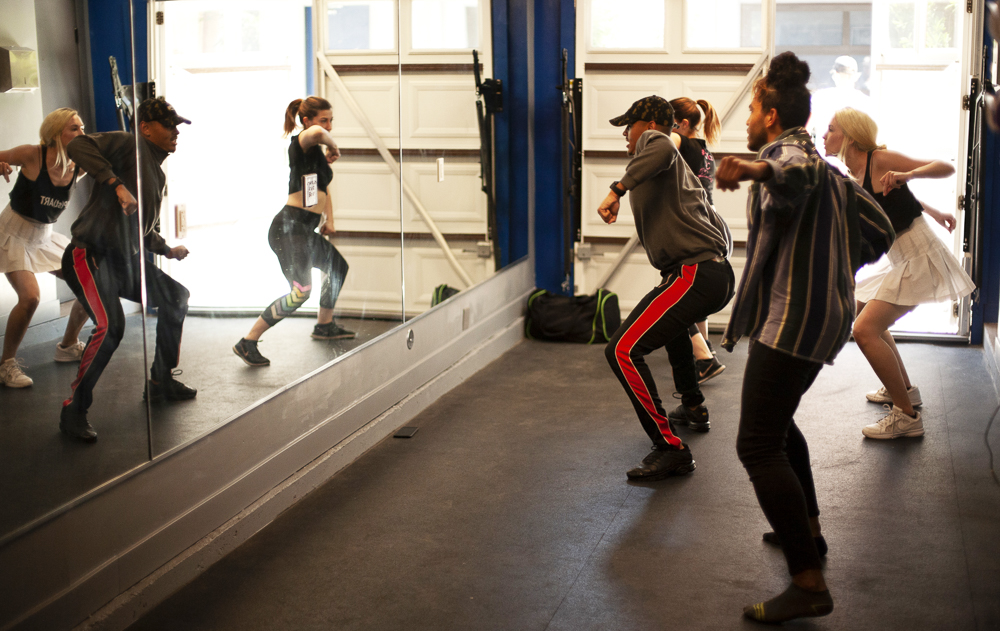
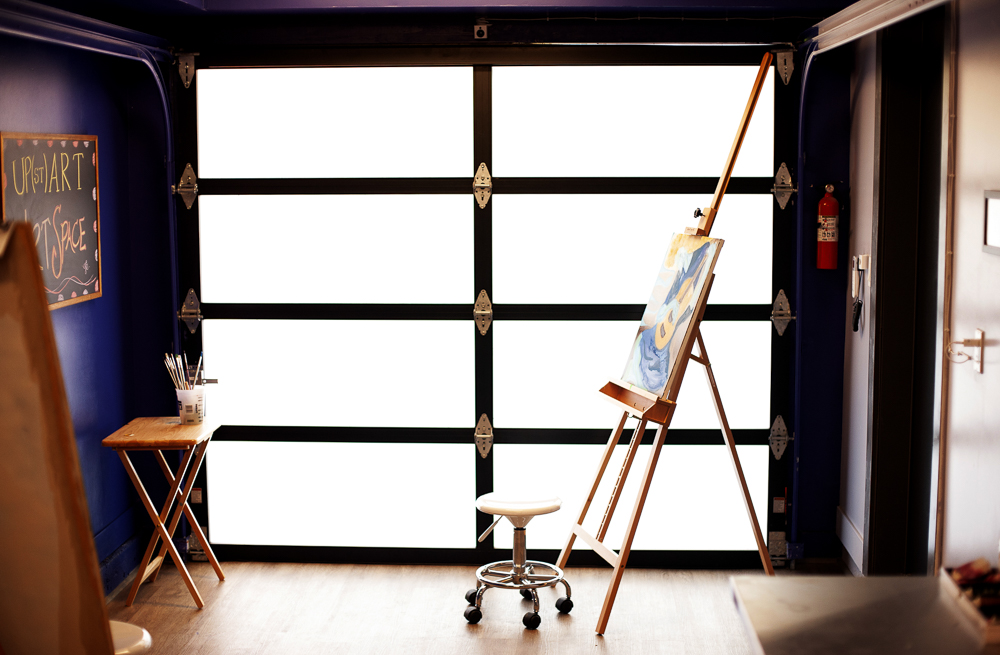

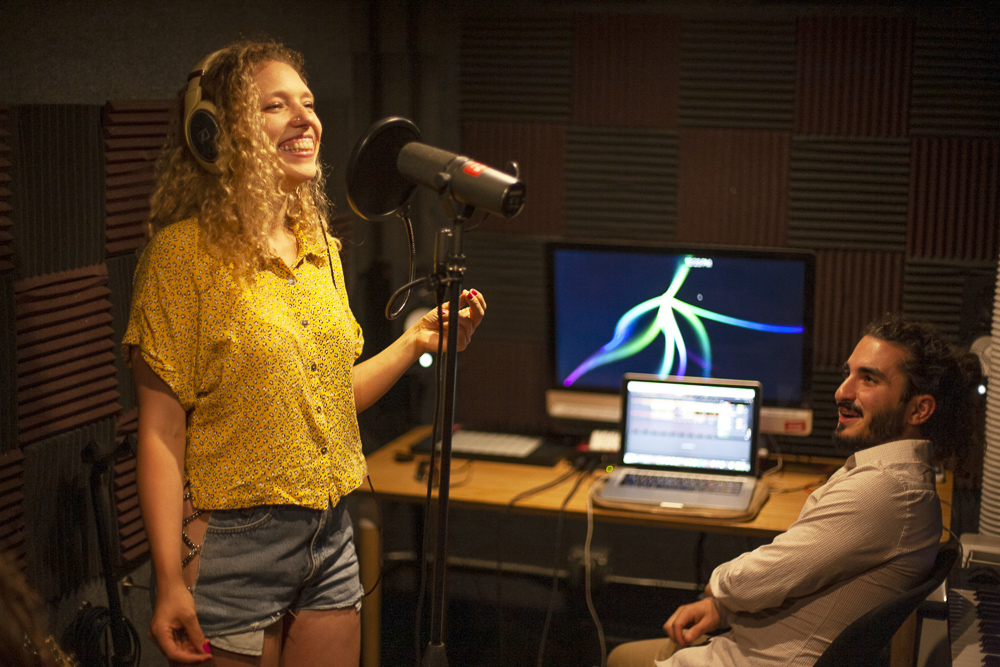
New Takes On An Old Idea
The commune, the kibbutz, the frat house. Communal living has existed for tens of thousands of years, ever since hunter-gatherers realized that there was safety in numbers. Orphanages, mental asylums and even rehabs fall under the co-living umbrella, defined as a living arrangement in which three or more biologically unrelated people share a common residence. Semi-variations of the form take shape throughout a person’s lifetime, starting at sleepaway camp, moving onto college dorms, all the way up until senior living facilities. Once considered an alternative lifestyle relegated to nonconformist Europeans and cult members, co-living today has been rebranded and commodified to fit squarely into the new rental economy alongside disruptors like Uber, Rent The Runway, and WeWork.
Co-living received a new lease on life nearly a decade ago when “hacker mansions” and international gaming houses took the idea of live-work-play to new heights. Start-ups like WeLive, Starcity and Common evolved the concept into an all-inclusive membership in the face of staggering rents and urban loneliness. It’s been around L.A. for nearly a decade, but developments shot up in droves last year, according to Christine McDannell, author and podcast host of “The Co-Living Code.” Last week, McDannell was coming off the heels of yet another co-living launch party, this time at Treehouse Hollywood, the first ground-up, large-scale co-living concept in America.
“I really wish Eric Garcetti was there,” she says of the L.A. mayor who’s thrown his support behind the site. As the founder and CEO of her own co-living house, directory and management software, McDannell grabs any opportunity she can to preach the gospel of co-living. “Globally, the average age for a co-living resident is 25- to 35-years-old, with a 50-50 split on male and female,” she says. She believes the ultimate draw for them is mobility, the convenience of clicking a button and moving to a new city tomorrow.
Sleeping pods stand out as the biggest trend in co-living, McDannell says, and L.A. claims the lion’s share of the market, thanks to pioneers like Upstart and PodShare, the original co-living chain that’s since expanded to San Francisco. “Podestrians,” as members are called, can book a built-in bunk bed at one of PodShare’s six L.A. locations and generally pay $50 a night, $280 a week or $1,000 a month. Properties have anywhere from 10 to 90 pods, and without any privacy curtains, it’s lights out and quiet hours by 10 p.m.
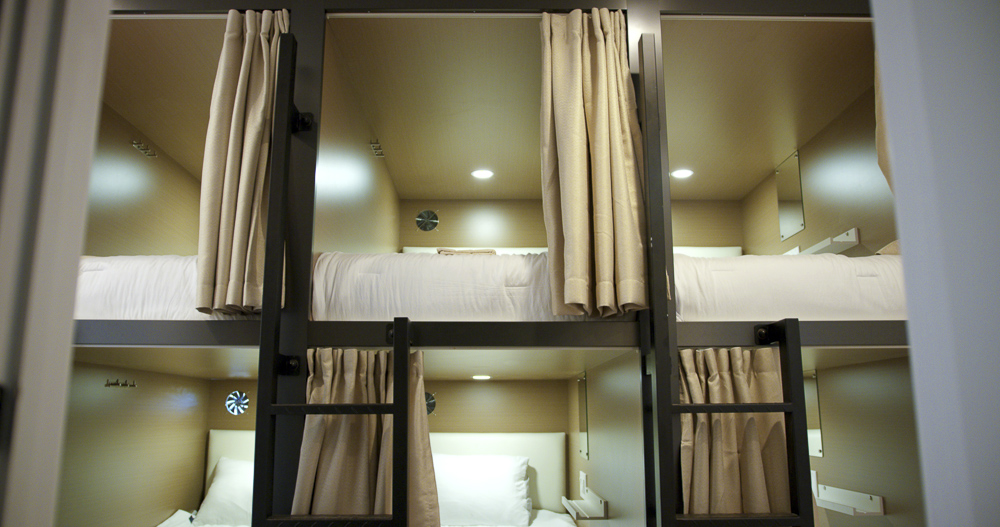
Eddy and Haven are two L.A. startups taking advantage of sleeping pods while maintaining an upscale, Instagram-endorsed lifestyle. These trend-conscious communities have taken the visions behind WeWork, Equinox and Soho House and dropped them into a Pinterest-board of a house. “There’s a lot of demand for this style of living,” says Eddy co-founder Seth Cohen, especially for transplants, post-graduates, and people leaving home for the first time. “It’s really an opportunity for people to start their careers in a more expeditious way and focus on their passions,” he says.
Rent starts at $795 a month at Eddy, where Aesop soap, daily housekeeping and Peloton bikes are complementary, and members can rent a roomier double-mattress pod for $50 extra. Cohen and his co-founders opened their first property in July, fully occupied, and are building two more campuses down the street. Haven, a wellness-focused co-living complex, sits on a multi-million dollar property in Venice Beach and tops rent at $995. The gym is sponsored by TRX. Celebrity chef Seamus Mullen hosts organic cooking classes. In the dedicated meditation room, Fleetwood Mac’s yoga instructor teaches breathwork.
A Shady Place for Sunny People
Jenae Connolly, a flaxen-haired 20-year-old Midwesterner, has glow-in-the-dark stars in the pod she sleeps in. Before settling into Eddy’s deluxe Hollywood project, she lived in her car for four months. But L.A. was always the goal, and she was finally here, using a 24 Hour Fitness to shower and “basically live,” as she put it.
“I was working at the time, which was outrageous,” she says. A sworn nomad, Connolly admits that she approaches life with calculated spontaneity. She has a thick tattoo on her front wrist that reads, “Your comfort zone will kill you.” Living outside ones’ comfort zone comes up often when talking to co-living tenants. This idea that a young person’s life is somehow measured in new and unfamiliar experiences off in faraway places on a shoestring budget.
Sennami Goziem, a 25-year-old Georgia-native with a Master’s Degree in International Business, came to L.A. for a more diverse job market. She moved into her Upstart pod on August 1 with three months’ rent saved and high expectations for herself and her career.
Then, L.A. quickly did that thing where it reminds you to check your ego outside the city limits. That month, her car was towed, she got seven parking tickets and she’s behind on rent today. The two-month stay has been extended indefinitely. “After going through all the things I’ve been going through, I’ve been broken, and living in a community like this, sometimes you have to come home and hear how someone else has been broken,” she says. “I’ve seen a couple of my roommates hit rock-bottom depression,” she says, and she tries to support them the best she can, just like they’ve supported her.
Going home means giving up on the future to Goziem and the thousands of young people living and co-living on their own. At the end of the day, sometimes it helps to come home to a friend, or 96.

